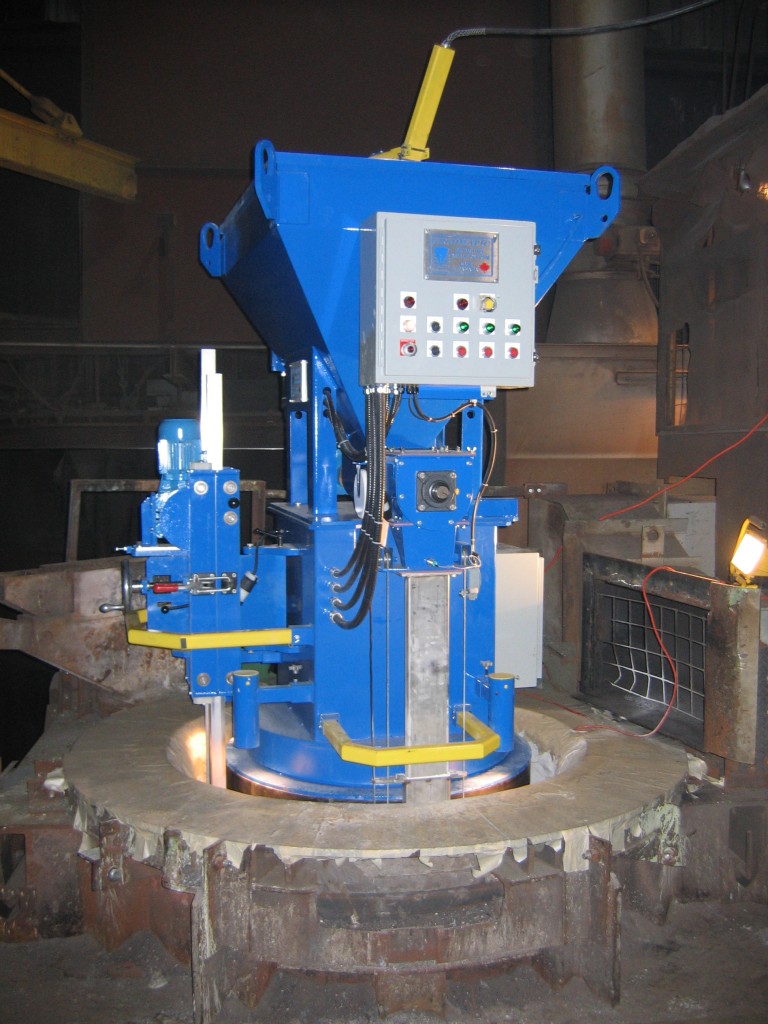Refractory Installation
Call us today on 0044 (0) 1985 248 888 to discuss your requirements
Eurocast Introduce Gradmatic Refractory Installation System into Europe
The Gradmatic Lining System has significantly influenced the foundry industry by introducing innovative technology to line coreless induction furnaces with dry, refractory materials. Specializing in refractory installation, our product primarily focuses on improving the industrial furnace lining process for worker safety and efficiency.
The Gradmatic system for refractory installation and vibration promotes:
- longer lining life with greater lining efficiency
- Reduced labour cost
- Improved environmental workplace condition
- Suitable for any induction furnace above 510mm diameter
Over 200 units sold in the USA and the extended lining life experienced by our
users is anything up to 60 percent.
Data was collected from eleven foundries using the RIVS to line furnaces of 9 tons or larger capacities, melting grey, ductile iron or copper. Ten lined furnaces with silica, one foundry melted copper and lined with alumina-based refractory. Consistent and sustained improvements in operation and health and safety conditions were shown by all foundries using advanced technology. All participants were using the full system. The study period ended in 2001. A summary of the principal results and benefits is detailed below:
- Air Samples for Respirable Silica – produced results between <0.01 and 0.02 mg/m3 when lining with the RIVS; four to ten times below OSHA’s (Occupational Safety and Health Administration) permissible exposure levels.
- Densities of linings – every foundry added more material than when manually lining a furnace, producing a denser lining. Only 5 of 11 foundries measured the densities of manually installed and RIVS installed linings. The densities of the conventionally produced linings ranged between 124 and 130 pounds/cu. ft. while those produced by the RIVS measured the maximum for silica between 137 and 139 pounds/cu.ft.
- Longer lining life in every foundry using the system. Typically, furnaces lined manually (with silica) lasted between 3.5 and 5.5 weeks. The RIVS lined furnaces lasted on average 2 weeks longer. In one foundry lining life increased 100 percent (from 3.5 to 7 weeks) and at another 143 percent improvement above manually lined furnaces. The 30-ton furnace lined with alumina based refractory lasted 50 percent longer than when lined conventionally.
- Workforce Reduction – Two workers operate the RIVS system despite the size of the furnace. Foundries surveyed manually lined furnaces using between 5 and 8 workers, depending on the size of the furnaces. The RIVS reduced that number to two, for a reduction ranging between 57 and 83%. Hours of labour to line a furnace decreased on average by 74% and overall elapsed time decreased by approximately 37%.
- Tonnage Throughput – All foundries reported a higher tonnage throughput per campaign simply because linings lasted longer. Increases ranged between 28 and 67 percent longer than when furnaces were conventionally lined.
- Fewer Annual Linings – Foundries reported an average 42% fewer linings annually using the system. Considering the cost of tear-out, relining and sintering each furnace, return on investment was significant.

In partnership with Eurocast Industries 2019.